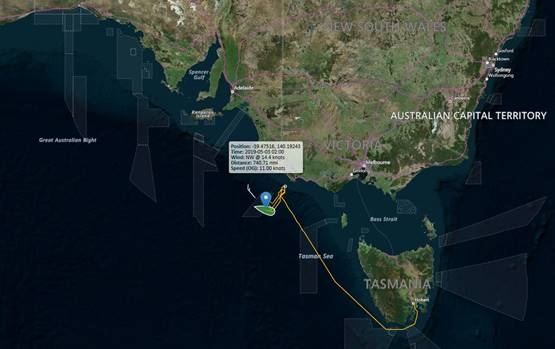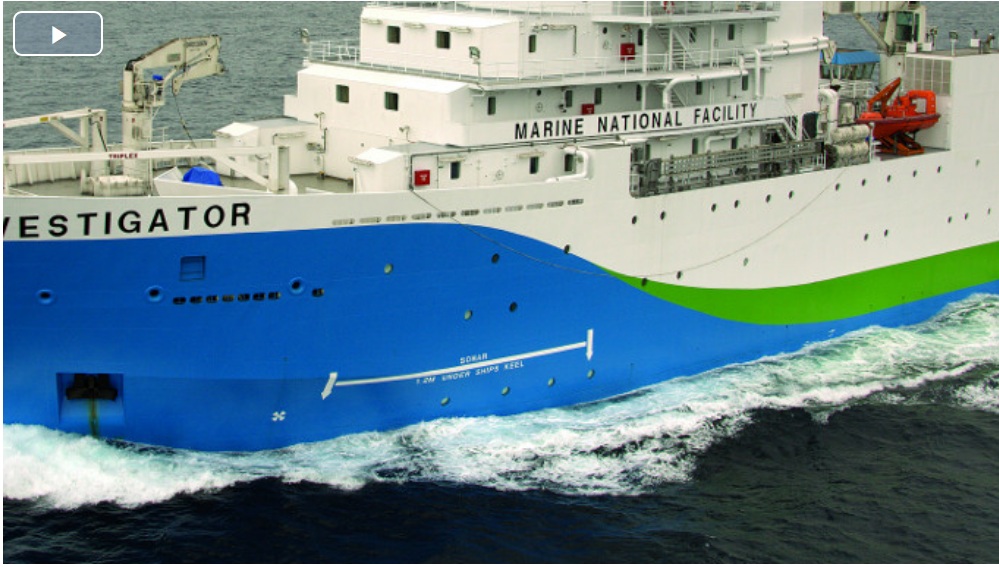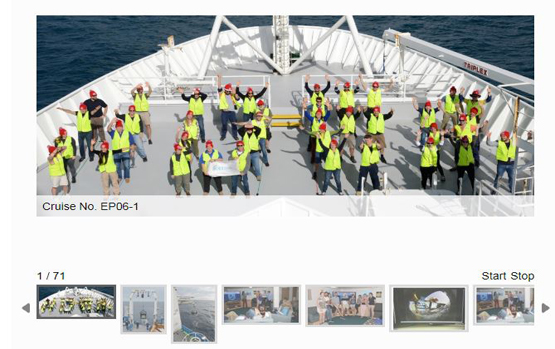The RV Investigator is currently undertaking oceanographic research along the 110°E meridian off Western Australia as part of the second International Indian Ocean Expedition. The voyage is led by Professor Lynnath Beckley of Murdoch University and the research is supported by a grant of sea time on RV Investigator from the CSIRO Marine National Facility.
|
Date: May 17, 2019 |
Time: 1200 AWST |
|
Latitude: 39.5°S |
Longitude: 110°E |
|
Wind direction: NNW |
Wind speed: 10 knots |
|
Swell direction: SSW |
Depth: 4600 m |
|
Air temperature: 9.6°C |
Sea temperature: 12.6°C |
|
Notes: Five species of albatrosses, cape petrels and a minke whale sighted today. The galley is providing wonderful food for a hungry and appreciative crew! |
|
The CSIRO scientists involved in the original International Indian Ocean Expedition during the 1960s described it as a desert. Huge regions of the Indian Ocean had almost no plant life. The thousands of species and billions of microscopic plants found in most oceans were largely absent. These plants, just like the ones in your garden or paddock, require nutrients to grow. In the garden, we add fertiliser with these nutrients, particularly nitrogen and phosphorus, to ensure a successful crop. These nutrients are in very short supply in the surface waters of the Indian Ocean.
To find out how much nutrient is present it is necessary to get samples of water from deep in the ocean. Special tubular containers, called Niskin bottles, located on the CTD are sent down with the ends open (can you guess why?) on a wire to depths of 5000 m where they are electronically triggered to close and collect the samples. Several hours later when the bottles are winched back to the surface the chemists can start the process of measuring the nutrients. To do this we use sophisticated on board instruments and internationally agreed high precision methods. It is a bit like a blood test to check the health of the ocean.
In the nearly 60 years since the first International Indian Ocean Expedition we have learned much about the cycling of nutrients in the ocean. A thousand meters below the surface where the water is only 5°C, nitrate is plentiful (Figure 1). However, enough light for plants to grow only penetrates to about 100 m where nitrate is particularly scarce. Processes that we did not understand in the 1960s, we now know are changing the supply of nutrients to the surface and some parts of the Indian Ocean are becoming more productive (more nutrients = more plants = more fish) while others are less productive. On this second voyage (IIOE-2) we are exploring how nutrient supply has changed over the last six decades in the Indian Ocean offshore of Western Australia.
In particular, we are looking for evidence of changes in nutrients within the deep ocean as a result of changing global ocean circulation patterns. This mix of deep and shallow circulation brings deep nutrients from the North Atlantic and some nutrients from the Pacific into the Indian Ocean (Figure 2).
These processes are changing faster than ever due to global warming. In addition, we will investigate nutrient recycling near the surface of the ocean. There, an expanding area of low oxygen is impacting on the microbial processes that recycle organic matter. Understanding the impacts of these changes on the ecology of the Indian Ocean is one of the key goals of the 110° East voyage.
Be sure to follow our daily Log from One Ten East at https://iioe-2.incois.gov.in and https://wamsi.org.au








